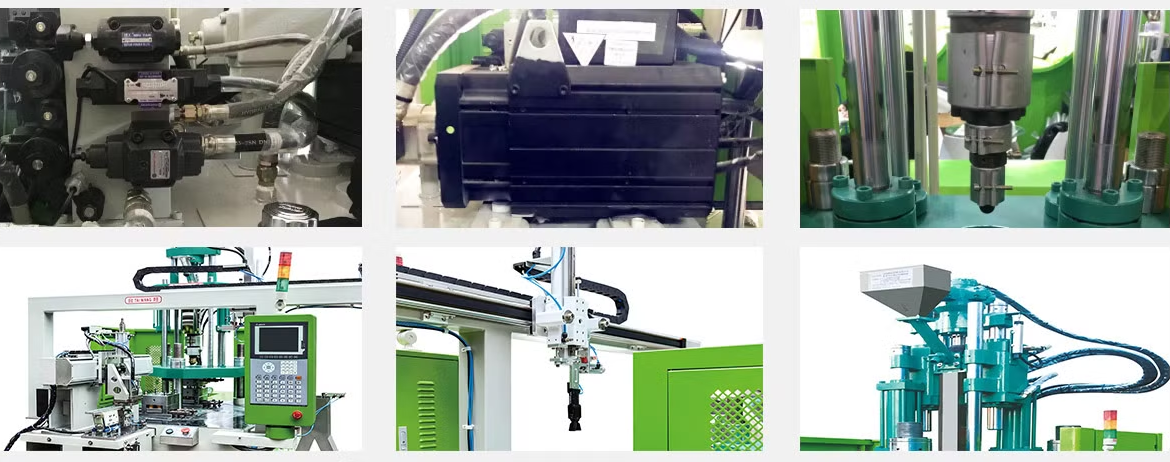Accessories Machine Understanding

Accessories machines are specialized equipment meant to streamline the production process of different types of accessories. With its design, it can handle a variety of materials including metals, plastics, leather, and fabrics. They also come with advanced mechanisms and precision tools that enable them to form very detailed designs as well as give high-quality outputs.
Kinds of Accessories Making Machines
Jewelry-Making Machines: Jewelry-making machines include different kinds of equipment such as casting machines, engraving machines, polishing machines, and soldering machines. These are necessary for creating intricate jewelry pieces with accuracy and efficiency.
Leather Crafting Machines: Leather crafting machines are designed for working with leather materials producing items like handbags, wallets, belts, and shoes. These include cutting machines, embossing machines, stitching machines, or edge finishing machines.
Textile Accessories Machines: Textile accessories require a sewing machine embroidery machine knitting machine and fabric printing machine among others which contribute to their processing needs.
Plastic and Metal Accessories Machines: Plastic-Metal-Accessories-Machines is another category that consists of injection molding presses die cutter presses stamping presses CNC milling centers etc. All these go into manufacturing various accessory components ranging from buckles to embellishments.
Operating Process of Accessories Making Machines
However, there exist some common steps in the operation process of accessories-making machines though they vary from one type to another according to their functionality:
Preparation: This stage involves preparing the raw materials used in making the accessory as well as setting up the machine with the necessary tools and parameters.
Processing: The actual fabrication process takes place here at this stage where different operations such as cutting shaping engraving stitching or molding raw materials for them to be finished into fashioned-up items
Finishing: Upon completion of primary fabrication some finishing touches may be applied to the accessories to improve aesthetics and functionality such as buffing coating painting assembling components among others
Quality Control: For these reasons, quality control procedures must be implemented so that the finished accessories can meet the desired standards of toughness, looks, and workmanship. This may include inspection, testing, and adjustments for a better final product.
Uses of Accessories Making Machines
They are used in various industries like
Fashion & Apparel: In the clothes industry, these machines are employed to produce different accessories such as jewelry handbags belts hats scarves, etc which enhance their collections and give added value to fashion brands.
Jewelry Manufacturing: For both mass production and bespoke jewelry designs making intricate high-quality pieces of jewelry such as rings and earrings necklaces or bracelets requires the usage of jewelry-making machines.
Automotive and Aerospace: These machines are essential in the automotive and aerospace industries for the manufacture of such parts as buckles fasteners knobs decorative trims used in vehicles and aircraft.
Home Décor and Furnishings: The textile accessories make many products including curtains cushions table linens or any other ornamental things that make a room look attractive they also add style plus functionality to our interiors
Benefits of Accessories Making Machines
Efficiency: When compared to manual methods, accessories-making machines streamline the production process thus lowering time spent on labor hence enabling the manufacturing of accessories within very short periods.
Precision: These machines are characterized by their precision in manufacturing accessories, the dimensions of which remain consistent and designs that become uniform regardless of the complexity of any pattern or intricate detail.
Scalability: Accessory-making machines adjust settings and production parameters for scalability purposes to handle dissimilar demands of small-scale artisanal production as well as large-scale manufacturing.
Customization: These accessories-making machines have capabilities that allow for customization hence as such manufacturers may cater to individual preferences and unique design requirements from customers.
Quality Assurance: Accessories-making machines help out with quality control since they involve few human errors leading to high quality and defect-free products.
New and Upcoming Features
As technology continues to advance, innovative features are being incorporated into accessories-making machines to enhance their performance, efficiency, and versatility. A few emerging trends and features include:
Automation and Robotics: Applying automation techniques alongside robotics to automate repetitive processes, increase productivity in accessory manufacture, or boost safety at the workplace
Digitalization and IoT Connectivity: Use of digital interfaces, IoT sensors, data analytics for machine monitoring, production metrics tracking as well as remote operation and predictive maintenance support.
3D Printing: Rapid prototyping through 3D printing technology can be applied in customizing products leading to an on-demand culture offering exceptional design freedom as well as material flexibility within the realm of accessories.
AI & Machine Learning: Application of artificial intelligence (AI) integrated with machine learning algorithms that facilitate process optimization; predictive modeling; and adaptive manufacturing among others that concern auxiliary products industry stakeholders.
Green Manufacturing Practices: The use of environment-friendly materials; energy-efficient processes; and sustainable manufacturing practices all aimed at minimizing environmental impact; and promoting responsible consumption within accessory manufacturing.

